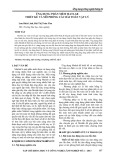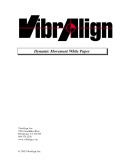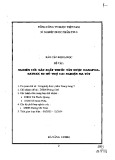
MINIREVIEW
Natriuretic peptide system: an overview of studies using
genetically engineered animal models
Ichiro Kishimoto
1,2
, Takeshi Tokudome
1
, Kazuwa Nakao
3
and Kenji Kangawa
1
1 Department of Biochemistry, National Cerebral and Cardiovascular Center Research Institute, Osaka, Japan
2 Department of Endocrinology and Metabolism, National Cerebral and Cardiovascular Center, Osaka, Japan
3 Department of Medicine and Clinical Science, Kyoto University Graduate School of Medicine, Japan
Natriuretic peptides
The existence of an atrial factor with diuretic and
natriuretic activities has been postulated since 1981 [1].
In 1983–1984, the isolation and purification of such a
factor and determination of its amino acid sequence
were accomplished in rats and humans [2–7]. The fac-
tor is a peptide distributed mainly in the right and left
cardiac atria within granules of myocytes and thus
called atrial natriuretic factor or atrial natriuretic pep-
tide (ANP). The discovery of ANP revealed that the
heart is not only a mechanical pump driving the circu-
lation of blood but also an endocrine organ regulating
the cardiovascular–renal system. For instance, in situa-
tions of excessive fluid volume, cardiac ANP secretion
is stimulated, which causes vasodilatation, increased
renal glomerular filtration and salt ⁄water excretion
and inhibition of aldosterone release from the adrenal
gland, which collectively result in a reduction of body
fluid volume.
Later, in 1988, a homologous peptide with similar
biological activities was isolated from porcine brain and
hence was named brain natriuretic peptide (BNP) [8].
However, it was soon found that brain BNP levels were
much lower in other species. It has since been shown
that BNP is mainly produced and secreted by the heart
ventricles [9]. Synthesis and secretion of BNP are regu-
lated differently from ANP [10], and the plasma con-
centration of BNP has been found to reflect the severity
of heart failure more closely than ANP [11].
In 1990, yet another type of natriuretic peptide
was isolated from porcine brain and named C-type
Keywords
bone; cardiac hypertrophy; guanylyl cyclase;
hypertension; natriuretic peptide
Correspondence
I. Kishimoto, Department of Biochemistry,
National Cerebral and Cardiovascular Center
Research Institute, 5-7-1 Fujishiro-dai, Suita,
Osaka 565-8565, Japan
Fax: +81 6 6835 5402
Tel: +81 6 6833 5012
E-mail: kishimot@ri.ncvc.go.jp
(Received 16 August 2010, revised 11
March 2011, accepted 1 April 2011)
doi:10.1111/j.1742-4658.2011.08116.x
The mammalian natriuretic peptide system, consisting of at least three
ligands and three receptors, plays critical roles in health and disease. Exam-
ination of genetically engineered animal models has suggested the signifi-
cance of the natriuretic peptide system in cardiovascular, renal and skeletal
homeostasis. The present review focuses on the in vivo roles of the natri-
uretic peptide system as demonstrated in transgenic and knockout animal
models.
Abbreviations
ANP, atrial natriuretic peptide; BNP, brain natriuretic peptide; CNP, C-type natriuretic peptide; GC, guanylyl cyclase; MCIP1, myocyte-
enriched calcineurin-interacting protein; PAR, protease-activated receptor; PKG, cGMP-dependent protein kinase; RGS, regulator of G-protein
signaling.
1830 FEBS Journal 278 (2011) 1830–1841 ª2011 The Authors Journal compilation ª2011 FEBS






























